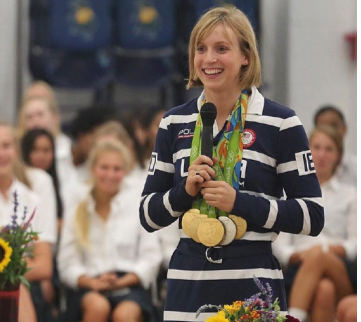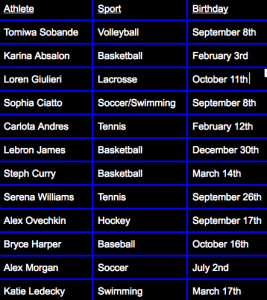Most student athletes have experienced at least one, if not several, of “those” parents. The parents who seem to lose all sense of morality when watching their child play sports. Sometimes, it seems that these parents want athletic success for their children more than their children do. But what if it was possible for these parents to ensure their child would be a competitive athlete?
A study published in the International Journal of Sports Medicine in January 2016 suggests that there might be a way to produce these “super athletes” by simply conceiving a kid during the early spring. This research suggests that children conceived in early spring, and therefore born in the fall, may be more physically fit and stronger than peers born in other months.
Researchers believe there are several reasons that this is possible. One reason is the relative age effect, when children gain an advantage by being mere months older than their classmates. These children are therefore given an edge in league cut offs and are more developed than their slightly younger teammates. Children born during the early fall seem to be be both taller and more muscular, which gives them an immediate advantage no matter how skilled they are, according to researchers.
Additionally, babies born in these beginning months of the school year have more exposure to Vitamin D because they are in the womb during the summer time, when the sun is out. This extra Vitamin D is thought to be a stimulus for bone and muscle growth.
Dr. Gavin Sandercock, who led the study, found that “children born in the Northern Hemisphere [and] born in autumn tend to have slightly bigger bone and muscle mass.”
“They start off with more muscle, become active earlier, than get involved in athletics sooner. It becomes a positive cycle,” Sandercock said in the paper.
For example, most youth sports seasons coincide with the school year. So, on a seventh-grade basketball team, the oldest members of the team would have been born in September, October, and November, as players born during January or later would be members of the eighth-grade team. But those born the following April, six months later, would be on the same team as those born in September, because they would still be in the seventh grade.
This six month gap may seem insignificant, but as a young child, this can make a huge developmental difference. Being more physically mature can catch the attention of a coach, which often leads to more playing time and more attention, propelling that athlete towards success, according to an article in New York Magazine.
For a kid born at the “right” time of year who ends up being a good athlete, it would be very hard to determine how much of that is attributable to the biological effects revealed by this study, how much is attributable to the relative age effect, and how much is the big, murky category of “other stuff,” such as interest in the sport, available youth programs, parental involvement, and nutrition.
Researchers discovered, however, that young soccer, basketball, and baseball players born during the fall are over-represented in competitive leagues. However, in professional sports, there is no apparent pattern.

